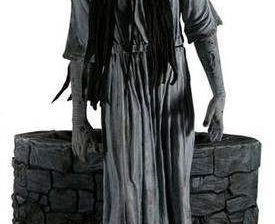The Texas Chainsaw Massacre franchise has always been a rocky one at best. There’s not really a direct sequel in the whole bunch. Save for a prequel to the 2003 remake, most of them offer up totally different stories and characters yet keep things so similar that they might as well all be remakes. The most diverse one of the bunch is definitely Texas Chainsaw Massacre 2, and while it certainly has its fans, it’s by no means Tobe Hooper’s most popular movie. And for Tobe Hooper, that’s saying something.
While it was a modest hit in theaters, Texas Chainsaw Massacre 2 did not receive favorable reviews at the time of its release. Going into the third, the major thing on everyone’s mind was fixing the problems of the previous movie. Which is sort of a problem when it turned out to not actually be that bad.
Leatherface: The Texas Chainsaw Massacre III was doomed from the start. One of the best things people remember about the film is its trailer, a riff on Excalibur which was done before the movie had set a director and well before production actually began. Before a director was brought on board, David Schow was hired to write and delivered an over-the-top and insanely gory script that took the series in wild new directions.

At the same time, they were fighting against the elements—literally. During the shoot, the entire area caught on fire and cost the production a lot of time. They were also struggling against the fact that they were shooting less than a mile away from Six Flags Magic Mountain amusement park, and the screams from the roller coasters can still be heard at a couple points in the movie.
A week into production, Jeff Burr was fired. It was going over time and over budget and they didn’t have the time to talk through problems or make compromises, so they let him go and immediately sought someone to take his place. Nobody wanted the job, however, so Burr was rehired after a few days.
 While everyone had their differences on the production, they were united by their belief in the ferociousness of this entry. They believed that Leatherface would deliver an amount of gore that had been previously unseen in the franchise. Jeff Burr, David Schow, even the executives at New Line were excited by the amount of gore they could deliver.
While everyone had their differences on the production, they were united by their belief in the ferociousness of this entry. They believed that Leatherface would deliver an amount of gore that had been previously unseen in the franchise. Jeff Burr, David Schow, even the executives at New Line were excited by the amount of gore they could deliver.
Unfortunately, the test audiences and the MPAA disagreed. Leatherface was brutally cut and heavily re-edited to try and obtain an R rating. And it still took several tries. Eventually, the film that was released looked very different from the one they had all intended to make. One of the major changes was a totally different ending from what had initially been shot, where Ken Foree’s character died. Burr actually had no idea the ending had been re-shot until he saw it in the theater.
 Leatherface: The Texas Chainsaw Massacre III is not so much anyone’s fault as it is a series of unfortunate events. As it stands, the movie is perfectly watchable, but it is certainly not what it could have been. From the early talks, they had wanted to make a return to the tone of the original by way of Cannibal Holocaust.
Leatherface: The Texas Chainsaw Massacre III is not so much anyone’s fault as it is a series of unfortunate events. As it stands, the movie is perfectly watchable, but it is certainly not what it could have been. From the early talks, they had wanted to make a return to the tone of the original by way of Cannibal Holocaust.
Instead, what they wound up with packed very little of the intended punch. It’s funny in places, clever in others, but always stops just shy of doing something really great. Given the strict MPAA cuts, that makes sense. Still, for all of the numerous problems that plagued it, Leatherface is still so much better than the one that followed it. Leatherface may not be at the top of his game here, but even then he still delivers a show.







